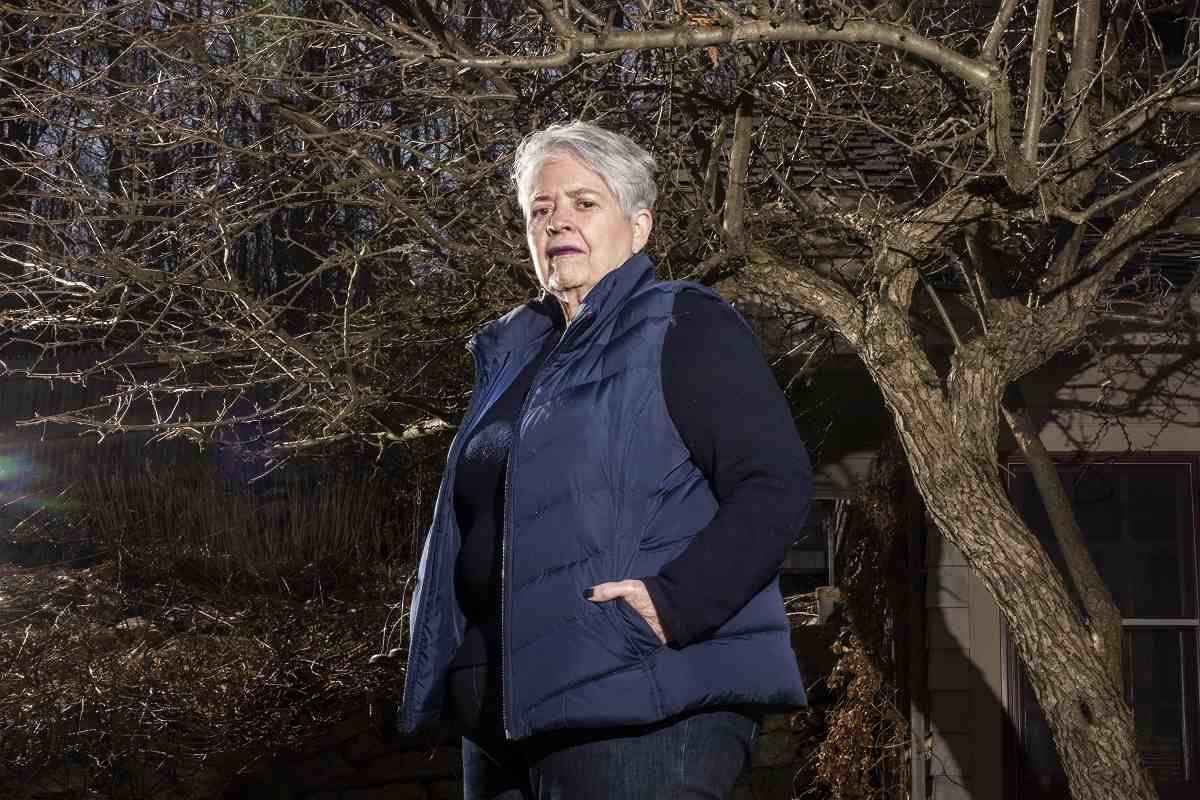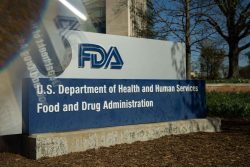
Catherine McDermott-Coffin had her student loans canceled after the Biden administration relaxed some rules for public servants with student debt.
16:05 JST, March 7, 2024
Before President Biden took office, Catherine McDermott-Coffin, 76, was resigned to spending the rest of her life repaying $148,966 in federal student loans.
The clinical psychologist had worked with incarcerated women at a state prison for more than a decade while paying down her graduate school loans – work that should have qualified her for a popular loan forgiveness program for public servants. But like so many other borrowers, McDermott-Coffin later learned she was in the wrong repayment plan for the debt program, derailing her chance of relief.
But everything changed in 2021. The Biden administration temporarily waived requirements for the notoriously complicated Public Service Loan Forgiveness program, giving hundreds of thousands of people like McDermott-Coffin a new path to cancellation. Within months of applying, McDermott-Coffin received a letter informing her that her $80,000 loan balance had been eliminated.
“It was just a great emotional weight lifted off my shoulders,” said McDermott-Coffin, of Bedford Hills, N.Y. “There was so much stress and anxiety around wanting to retire but having this $621 bill every month. Not having to worry about it is such a tremendous relief.”
There are about 3.9 million Americans like McDermott-Coffin who have benefited from Biden’s cancellation of $138 billion in federal student loans during the past three years. Yet the administration’s efforts are not energizing potential voters the way the White House had hoped and, as Biden gears up his reelection campaign, he is seeking to raise the profile of one of his most sweeping actions.
Biden, who continues to grapple with how best to frame his relief push, faces backlash from Republican opponents who have cast the loan forgiveness as elitist, expensive and unfair. At the same time, some progressives and younger voters see it as inadequate.
The president has made adjustments to existing loan forgiveness programs to accelerate relief for scores of borrowers. But it is a fraction of the number who would have benefited from his failed plan to cancel up to $20,000 in debt for more than 40 million people. The Supreme Court’s rejection last year of that program has left some borrowers disillusioned and questioning whether Biden did enough to fulfill a campaign promise to ease the burden of $1.6 trillion in federal student loan debt.
“It just seems like the routes he’s taken have taken a long time and it’s frustrating,” said Thomas Allen, 33, a family law attorney in Kansas City, Mo., with $74,000 in federal student loans. “People are disappointed, especially in my generation. I think a lot of people are not going to show up to vote.”
Activists and liberal lawmakers who pressed Biden to embrace bold action on debt cancellation say the work is far from over. But, as Biden prepares to deliver his State of the Union address Thursday, they also say now is the time to herald the president’s accomplishments in ridding millions of Americans of debt.
“What he has done is remarkable,” said Sen. Elizabeth Warren (D-Mass.), a longtime leader in the debt cancellation movement who has urged Biden to do more. “He has canceled more student loan debt than all the other presidents put together. It’s less about the billions of dollars and more about the millions of people.”
To achieve debt relief, the president has identified existing loan forgiveness programs mired in bureaucratic red tape – such as Borrower Defense to Repayment, Income-Driven Repayment and the public servant loan program – and cleared a path for borrowers by adjusting the rules. As a result, Biden is responsible for the largest amount of student debt cancellation since the government got into educational lending more than 60 years ago.
But Biden himself has not been viewed as an enthusiastic and consistent salesman for the mass student loan forgiveness that his administration has facilitated.
Prior to agreeing to his 2022 plan to forgive up to $20,000 for most borrowers – which would have wiped more than $400 billion of debt from Americans’ balance sheets – Biden had to be convinced that taking such an executive action was good policy and smart politics, according to current and former administration officials, who spoke on the condition of anonymity to discuss internal deliberations. As a candidate, he questioned whether a president had authority to provide large-scale relief on their own. He also worried about the optics of the federal government bailing out Ivy League graduates and other well-to-do professionals with a debt relief program unavailable to many working-class people.
Biden’s evolving views on the issue have also been reflected by his aides and allies. Some of them are now urging him to speak out more about his student loan forgiveness record, while others believe he should instead continue to focus on more broadly popular parts of his agenda, such as infrastructure.
When Biden’s campaign determined how to spend $25 million in early advertising last year, it settled on several television spots highlighting his record on job creation, rebuilding roads and bridges, taking on climate change and cutting the price of prescription drugs. His student loan forgiveness push was scarcely mentioned.
Now, Biden’s aides have been strategizing ways to increase awareness about his record on student loans, seeking to elevate testimonials from people who have posted videos online about their debt forgiveness and use social media to reach voters who do not usually pay attention to politics.
In one such message, Eric Fitts, a North Carolina father of two, recently told the president how having $125,000 in student loans forgiven was “a tremendous relief.” Videos of Biden eating barbecue at the home of Fitts and his sons went viral, with more than 4 million views across social media, according to the campaign.
Hearing directly from borrowers who had their loans forgiven may ultimately be more impactful than political speeches, said Melissa Byrne, founder of We The 45 Million, which advocates for student debt cancellation.
“When you think about the relational aspect of the personal testimony – when people get their loans canceled, they tell everybody and they keep telling everybody,” she said.
In her family, McDermott-Coffin is one of two people to benefit from the president’s efforts. Her stepson had his debt eliminated after the Education Department gave him credit for the more than two decades he had spent in repayment. Similar one-time account adjustments – an effort announced by the department in 2022 – has so far resulted in $45.6 billion in debt cancellation for nearly 1 million people.
“What the president is doing is life-changing for so many people,” McDermott-Coffin said. “I think he’s doing the best he can. He’s just hamstrung by the politics of it all.”
Republican lawmakers and some Democrats have stood firmly against Biden’s more sweeping loan forgiveness plans. Last year, Congress approved a Republican-led resolution to strike down the president’s plan to forgive more than $400 billion in student loans, a measure that was swiftly vetoed by Biden.
In recent weeks, Biden has become more ardent in his public support of student loan forgiveness, casting substantive debt relief as a form of liberation for millions of Americans.
“When we … relieve Americans of their student debt, they’re free to chase their dreams,” the president said during a speech last month at a library in Culver City, Calif., where he unveiled $1.2 billion in new loan forgiveness for longtime borrowers enrolled in a new repayment plan. “An awful lot of people with student debt are putting off whether they can have a child, whether they can – a whole range of basic, basic, fundamental issues.”
Even as Biden has begun to more aggressively champion his record on loan relief – recently promising to send 25,000 signed letters each month to borrowers whose student debt is being forgiven – he continues to contend with concerns that the push may not play well among people who did not go to college.
“People say to me sometimes, ‘Well, Joe, that’s great. You’re helping people get into college,’” Biden said in the Culver City appearance in a nod to the criticisms. “‘But how about all those hard-working people that you grew up with in your neighborhood? I mean, all those folks in labor unions, how about all those hard-working people who work with their hands?’”
The president went on to discuss another program his administration was also putting forward on the same day: almost $200 million in grants to help support apprenticeships.
Denise Smith, deputy director at the Century Foundation, a liberal think tank, said that since broad student loan forgiveness was such a major part of Biden’s racial equity push, the president should focus more on touting his efforts and less on trying to address the concerns of people who feel left out.
“There needs to be a better job done in telling that story of how many people are actually being able to benefit from this relief,” she said.
Biden’s aides say that they plan to increase engagement on the issue as the election gets closer. And Biden will likely have an even more expansive record on student loans to talk about in a few months, officials say, as more of his administrative and executive actions are implemented.
After the Supreme Court struck down the loan forgiveness plan last year, the Biden administration began a rulemaking process to find another way to deliver expansive loan forgiveness under a different legal authority. That effort is ongoing, with the Education Department slated to produce a rule in the coming months. Activists say the effort is a clear indication that debt relief remains top of mind for the administration, which reconvened negotiators last month to hammer out details of the plan.
“As long as we are open to continuing to work with the administration to ensure that we hit the mark, more cancellation will continue to come through,” said Wisdom Cole, national director of the NAACP Youth and College Division and a negotiator on the rulemaking committee. “You’re seeing it happen in smaller increments, but ideally these smaller increments will total a large amount of debt canceled for borrowers across the nation.”
A part of the frustration for some younger borrowers is that the vast majority of loan forgiveness has been delivered to people with long payment histories, not recent graduates. Although the new Saving on a Valuable Education repayment program reduces monthly bills and shortens the life of loans for millions, borrowers, especially those with larger debts, may still spend their prime years in repayment.
Rep. Ayanna Pressley (D-Mass.), who once defaulted on her student loans before paying them off in recent years, said she understands the psychological toll the debt can take and the disappointment of people who have yet to benefit from any relief.
“Borrowers that have not yet felt the impact of that transformative relief are understandably frustrated,” Pressley said. “But I want to remind them of the progress that has been made. People questioned whether the president even had the authority to do anything. And so we took an issue that was sort of treated as if it was fringe … and we mainstreamed it. And now it’s part of the daily discourse and one of the most meaningful and transformative policies.”
The State of the Union address on Thursday could offer a hint at how mainstream the issue has become for Biden, who will have one of his largest audiences of the year and more than an hour to talk about the accomplishments and ideas he wants voters to focus on as he seeks a second term.
Still, for some borrowers whose debts have not been forgiven, it is hard to reconcile what is with what could have been. Allen, the attorney in Missouri, and his wife would have received a combined $30,000 in loan forgiveness under the plan struck down by the Supreme Court. Neither of them qualifies for any of the other programs that Biden has used to provide debt cancellation to teachers, disabled borrowers or students defrauded by their colleges.
Allen, who graduated from the University of Missouri’s law school in 2017, has been fighting with his loan servicer to enroll in the Save plan. But even if he is successful, it will still take him well over a decade of payments before he is eligible for debt relief.
“Look, I’m fine with paying. My wife and I sold a car to pay down her student loans,” Allen said. “But we thought we were getting that relief. So many of our friends with children thought they were getting relief. I’m just thinking how much better off could they have been.”
"News Services" POPULAR ARTICLE
-

American Playwright Jeremy O. Harris Arrested in Japan on Alleged Drug Smuggling
-

Taiwan President Shows Support for Japan in China Dispute with Sushi Lunch
-

Japan Trying to Revive Wartime Militarism with Its Taiwan Comments, China’s Top Paper Says
-

Japan’s Nikkei Stock Average as JGB Yields, Yen Rise on Rate-Hike Bets
-

Japan’s Nikkei Stock Average Licks Wounds after Selloff Sparked by BOJ Hike Bets (UPDATE 1)
JN ACCESS RANKING
-

Govt Plans to Urge Municipalities to Help Residents Cope with Rising Prices
-

Essential Services Shortage to Hit Japan’s GDP By Up to ¥76 Tril. By 2040
-

Japan Prime Minister Takaichi Vows to Have Country Exit Deflation, Closely Monitor Economic Indicators
-

Japan to Charge Foreigners More for Residence Permits, Looking to Align with Western Countries
-

Japan GDP Down Annualized 1.8% in July-Sept.























